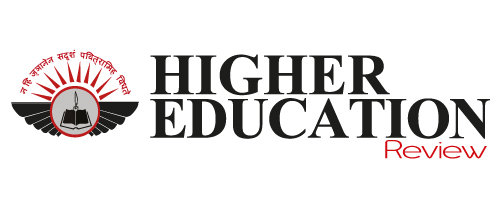Bridging the Industry-Academia Skill Gap: A CHRO’s Perspective
 Aparna is a seasoned HR Leader with over 24 years of experience driving human capital strategy, transformation, and culture across industries. She excels in aligning HR operations with business goals, enhancing organizational effectiveness from startups to mature enterprises in technology, supply chain, R&D, and IT services.
Aparna is a seasoned HR Leader with over 24 years of experience driving human capital strategy, transformation, and culture across industries. She excels in aligning HR operations with business goals, enhancing organizational effectiveness from startups to mature enterprises in technology, supply chain, R&D, and IT services.
As someone who has spent over two decades in the HR function—navigating complex transformations, scaling talent in diverse industries, and preparing organizations for future disruptions. This isn’t a new concern. But in a world where technologies evolve in months, where roles are redefined at a rapid pace, and where agility matters more than tenure, the consequences of this gap are far more pronounced today than ever before. And here’s the truth: We’ve moved beyond being a support function—HR now drives the solution. “We are the bridge architects—connecting campuses and corporates, theory and practice, aspiration and application.
The Changing Nature of Work—and Talent
The pace of change in the workplace is relentless. Roles that didn’t exist a decade ago—AI ethicists, sustainability analysts, digital transformation specialists—are now critical. Simultaneously, we are witnessing a talent pool entering the workforce with theoretical knowledge but often lacking the readiness to navigate real-world business dynamics, ambiguity, or multidisciplinary collaboration.
At the same time, organizations can no longer afford long onboarding curves or mismatched hires. The pressure to stay competitive demands talent that is not only skilled but adaptable, curious, and aligned with business realities from Day 1.
This is where HR steps in—not as passive recipients of talent, but as co-creators of future capability.
Strategic Workforce Forecasting to Inform Academia
At the heart of this effort lies workforce planning. We in HR hold a front-row seat to business strategy—we know what’s coming. Whether it’s the shift to green tech, the rise of generative AI, or the expanding need for cybersecurity in digital supply chains, we can forecast the skills and roles our organizations will need in the next 2–5 years.
Imagine what we can unlock if we take those insights to our academic partners—colleges, technical institutions, and online learning platforms. By sharing skill maps, emerging role frameworks, and industry trends, we can help educators recalibrate curricula to reflect reality, not legacy.
It’s no longer enough for academia to operate in silos. As HR leaders, we must extend our hands as collaborators.
Deepening Campus-Industry Collaboration
Most of us already engage with academic institutions through placements or guest lectures. But we need to move beyond episodic interactions to long-term partnerships.
That means co-designing modules, offering real-time projects, and embedding live business problems into classroom learning. In some of our recent partnerships, we have invited students to solve actual product or process challenges—while being mentored by senior leaders. The energy, creativity, and learning on both sides have been transformative.
When students work on live use cases, they graduate not just with theoretical knowledge, but with practical insight and confidence.
Structured Pathways from Campus to Corporate
The journey from college to the workplace is often a cultural and capability shock. HR can smooth this transition by investing in structured early-career programs—internships, apprenticeships, and “try and hire” models that expose students to the nuances of workplace culture, communication, collaboration, and customer orientation.
One of our most successful programs includes a six month capstone internship aligned to business KPIs, followed by a curated onboarding sprint focused on growth mindset, digital tools, and stakeholder management. The results? Faster time to productivity, stronger retention, and better engagement.
Embedding Lifelong Learning into Our DNA
Even the most updated curriculum has a shelf life. Which is why HR must foster a culture of lifelong learning.
We’re seeing great success in offering our employees and early-career hires access to micro-learning platforms, nanodegree programs, and AI-based upskilling tools. These same resources can be extended to academic partners, helping them embed up-to-date industry modules into their courses. Imagine a business school course on digital marketing that includes live content from Google or HubSpot certifications—that’s the kind of relevance we need.
Learning must be continuous, contextual, and curated and bring in the culture of unlearn, learn and relearn.
Human Skills: The X-Factor
The conversation on bridging skill gaps often focuses on tech proficiency or domain skills. But equally important—and often more difficult to develop—are human skills: emotional intelligence, problem-solving, resilience, and inclusive collaboration.
These are the traits that differentiate high performers in hybrid, fast-moving workplaces.
In an organization, we must run immersive simulations, storytelling workshops, and theatre-based learning programs for fresh talent to build these skills. I have seen firsthand how such interventions spark empathy, confidence, and better decision-making.
These are skills better introduced in college, not just after hiring.
Technology as a Connector, not a Barrier
Technology can be a powerful equalizer in this mission. Through virtual internships, remote mentoring, gamified assessments, and collaborative digital labs, we can scale access to industry exposure—not just for top-tier institutions but also for underserved campuses.
I have experimented with remote project pods for final-year students across geographies, where HR and business mentors guide them through sprints using real company data. The impact? Broader talent reach, stronger brand recall, and a more diverse, distributed talent pool.
A Call to Co-Create the Future
The industry-academia skill gap isn’t a flaw to be fixed; it’s a space of innovation to be designed.
It requires a mindset shift—from both academia and corporate India. HR professionals have a unique vantage point—we understand both talent potential and business performance. Let’s use this power not just to hire better, but to shape the very pipeline from which talent emerges.
Let us shift from being evaluators of skills to co-owners of capability creation. From being gatekeepers to being gardeners—nurturing the next generation of talent with intention, empathy, and foresight because in the end, bridging this gap isn’t just about filling roles. It’s about building futures and HR is right at the heart of it.

.jpg)